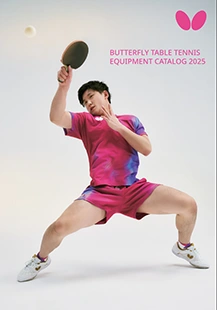Table tennis is more than a basement game for teenagers in suburbia. Much more in fact. Table tennis (or ping pong) players compete on the world stage, flexing their seemingly superhuman agility, precision, and reaction time. Players at the highest level regularly hit the ball at speeds approaching 70 miles per hour (112 kph), and still have the reflexes to control spin and placement. As a result of the fierce competition, top-level athletes need access to table tennis equipment that allows them to capitalize on their hard-earned skill. One of the most important pieces of table tennis equipment is the paddle.
Professional Table Tennis Paddles
As with any professional level sports equipment, there is more to table tennis paddles than immediately meets the eye. Here are the main components that make up a pro’s paddle.
- Blade
The blade is the body of the paddle without any rubber attached. Though wood is the main component, there are many different materials that a blade can be made from. Carbon fiber is an emerging favorite, as are other synthetic materials, where these materials are layered along with different types of wood to create a carefully tailored piece of equipment. The blade’s composition will affect the speed of the paddle, the control of the paddle, and other characteristics that will depend upon that player’s personal preferences. - Rubber
Rubber is attached to both sides of the paddle (some styles require rubber on only one side). Rubber is chosen based upon the characteristics of each sheet of rubber and can also be tailored to the player’s style. There is great variety in rubber which can greatly affect spin, speed, and control. This explains why table tennis rackets have one red side and one black, as a player with very different rubber surfaces could gain an advantage if the opposing player cannot easily tell which side is being used to strike the ball. - Glue
The glue that adheres the rubber to the blade can also be important. The glue and the process of connecting the rubber to the blade are important to ensure a consistent surface for striking the ball, and also to protect the equipment as most tournament players change rubber frequently, much as tournament tennis players replace strings on tennis rackets. National and International organizations also have rules in place regarding harmful volatile compounds (VOCs), so it is important to use glues that are approved for this use if you plan to play in tournaments.
All of these factors come together to create a highly customizable piece of professional table tennis equipment. Not only are the characteristics tailored to the player’s tastes, but the player gets to build the completed racket. This is the last word in control and connection with your passion.






















